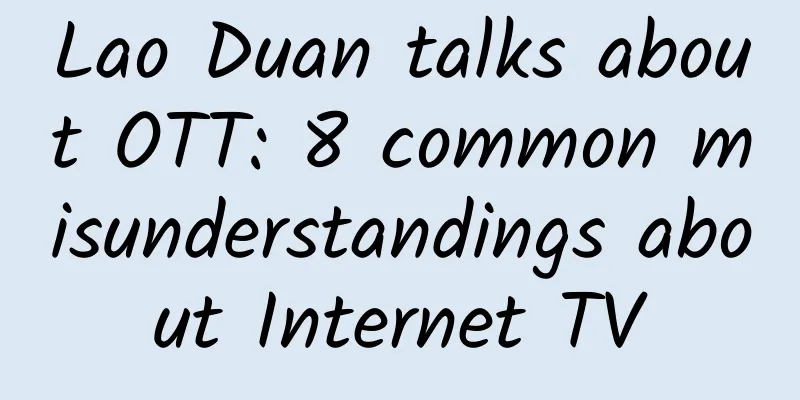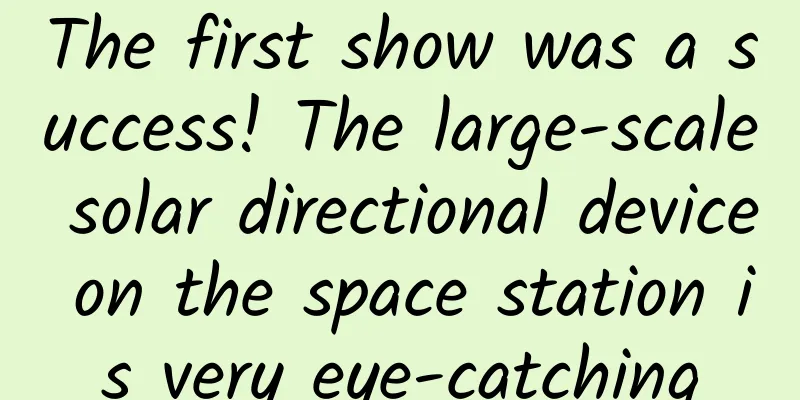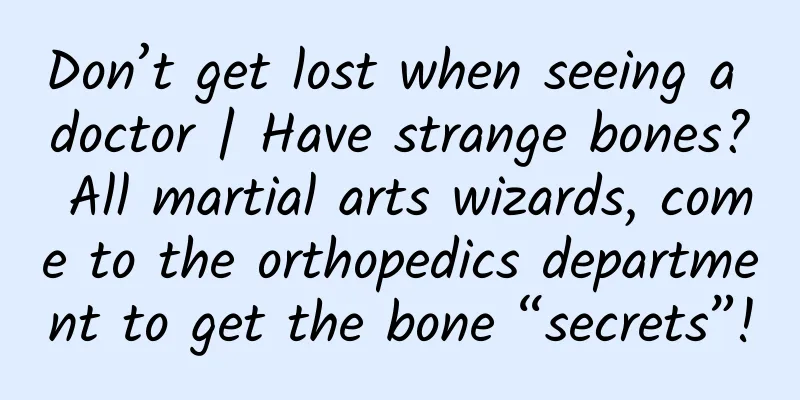Lao Duan talks about OTT: 8 common misunderstandings about Internet TV

|
Duan Youqiao, an artist of iQiyi. From an Internet company to DTV, IPTV, STB and OTT, after 12 years, he has returned to an Internet company after a long journey. The journey is not short, but the distance is zero. The 8 major misunderstandings of Internet TV, these are Duan’s own thoughts on product experience and user experience, welcome to discuss! 1. The fewer buttons on the remote control, the better Usually, the so-called standard TV remote control has 39 buttons, and the cable set-top box has dozens of buttons. Most buttons and viewers don't actually use them, and some buttons are even used once in a lifetime. Therefore, one of the major charges against remote controls is that they have too many buttons and they are useless. Therefore, after Internet companies entered the field of set-top boxes and TVs, the first object to be revolutionized was the buttons on the remote control, trying to make the buttons on the remote control as few as possible, on the grounds that the fewer the buttons, the easier it is to use, and the fewer the buttons, the better it is to use. For example, the first generation of Xiaomi's set-top box remote control was designed with 9 buttons, and the second generation finally added 2 buttons to 11 buttons, because sometimes it is still necessary to adjust the volume on the non-playing page. Of course, there are also remote controls with shuttle control that have the number of buttons within 7, such as TCL's ice cream and some TV models. But is it really the case that the fewer buttons, the better? Actually not! The correct principle should be just the opposite: under the premise of being able to control blindly (at least the commonly used buttons can be easily controlled without looking), the number of buttons should be as many as possible. Because simple and easy-to-use control interactions should preferably be reached with one button, unless it takes too much effort to find this one button. Moreover, many buttons that require more than "short press" such as air mouse, voice, etc. are indispensable. 3D, input, function switching, etc., if they do not violate the above-mentioned principles of blind control or easy control, placing a button on the remote control is easier to operate than using the menu key like the Android system to find this function. Therefore, under the premise of being able to control blindly or easily, the number of keys on the remote control should be as much as possible. The three main trade-offs are: the difficulty of thinking for the brain + the cost of discovery for the eyes + the cost of movement for the thumb. This is also a typical smile curve, and the middle point is the best! This immediately reminds me of the minimalist JOBS who stubbornly retained a mute button when designing the iPhone. Advocates of minimalist remote controls should think about this. 2. The fewer buttons on the remote control, the better Many TV-related product managers and designers have tried to minimize the path of a function, that is, the number of keystrokes. But does the minimum number of keystrokes mean the simplest and easiest interactive operation? Regarding this question, I would like to give an example: many years ago, when the channels went from a few open channels to dozens of analog channels and finally to 200 digital channels, many people foresaw that EPG would have huge commercial value. This was a new entrance to TV. Because after more than 100 channels, the cost of finding any channel would become extremely high. If you design an EPG button on the remote control, there will be many channel lists after entering, and then you can follow the design principle of "minimum number of keystrokes" to reach a certain channel according to CCTV, provincial satellite TV, provincial channels, city channels, etc. But many years have passed, and China's cable digital TV users have exceeded 150 million, but the number of visits to this EPG proprietary page is still very small, and the commercial value is naturally far from expectations. What is the reason? In fact, users do not like to change channels in this way at all. They still like to press the up and down keys to change channels. Even if they have to press dozens of keys to change to a certain channel, they are still not tired of it. They are still not willing to press the EPG key to enter a new page to change channels. This is a very interesting phenomenon, but the reason is very simple. When people use the remote control, although fewer keys are "easier" for finger movement, if they need to see with their eyes and think with their brains, these burdens are far greater than the movement of fingers, which is not liked by users. In addition, the cost of correcting errors is very low. Once you make a mistake by pressing the up and down keys to change channels, you only need to press the opposite key to get back. Therefore, the order of consideration for the correct design is: first, it is best not to use your brain, second, it is best not to look, and third, it is best to press fewer keys, while considering the lowest cost of correcting errors. "Humans are animals who would rather die than think." Haha, it seems that philosophers are the wisest! Therefore, the principle of remote control interaction process design should be, first, no need to think, second, no need to look. In contrast, the number of key presses is not as important as we think. One or two more key presses, as long as it meets expectations and is simple and easy to use, should be a better choice than the number of key presses. 3. Watching TV is more comfortable because the screen is large Therefore, the reason why TV screens are more comfortable is not because of the large screen, but because of the long viewing distance. When you look at things far away, your vision and nervous system are more relaxed and less tense. With the improvement of TV display technology, people will watch TV closer and closer, which will increase the resolution of the TV UI interface, and various operable menus, tabs, and buttons will become more and more dense, which will bring important changes to the control and interactive design of the TV. 4. TV screens are much larger than PAD screens This is a bit of a headline party. The physical size of a TV screen is of course larger than that of a PAD. But from the perspective of control, the screen size of a TV is actually smaller than that of a PAD. A 4-inch IPHONE5 screen can neatly arrange 4X6=24 clickable icons. According to this distance, it is easy to calculate the number of icons that can be placed on a 10-inch PAD. This number is much larger than that of a TV screen. In other words, a 10-inch PAD screen has fewer operable and clickable icons in UI design than a 40-inch TV. And much less. This is an important UI visual design principle. In other words, after the first round of smart TVs came, the web-based thinking of TV screen design was wrong. Too many focuses are not suitable for TV operation at a distance. Even though MSTAR, MTK, REALTEK, AMLOGIC and other chips have begun to support 1080P UI (not video format, and some chips have begun to support 4K UI), this principle is still valid. In other words, to make a universal TV application, assuming that the smallest character is above 22P, the operable focus is within 3X7=21 to achieve a better effect, especially for a 40-inch TV. This is even much smaller than the screen of an iPhone 5, not to mention a PAD. Therefore, for the TV interface, the design principle should be based on the TV screen being smaller than the PAD screen. Otherwise, the TV screen will be designed to be as complicated as a web page, and it will be difficult to see the screen clearly and operate it with the remote control. 5. The interaction of Internet TV should be TV-like With the emergence of intelligent television, especially after the Internet, there are two trends in television interactive design: one is television design and the other is Internet design. The Internet here does not mean to design it as a web page, but to say that the logic and process are like a website. As we all know, the smallest element of television design is video or channel, while the entrance of Internet design is focus. These are two concepts with completely different languages and different thinking. The former emphasizes playback, and menu selection is a secondary function. In other words, whether you like it or not, you will be given a video to watch first. Of course, with the improvement of recommendation technology, this video can be more and more personalized and more suitable for you. The latter emphasizes the logic and order of information acquisition, first macro and then micro, first general browsing and then detailed viewing. The latter also has a new form, that is, a dynamic small window video playback on a static page. In the long run, TVization will not be more promising than Internetization, just like the current portal website videoization will lag behind the portalization of video websites. This can be seen at a glance from the current development speed, especially the growth rate. TVization means that after turning on the TV, you should first see the video, and then the menu will appear after operation, and there will be more other functions. This is a last resort before the TV is intelligent, rather than the essential need of human beings for video information, because there were only a few channels or dozens of channels before, and the performance of TV terminals and service clouds could not provide menu interface selection. This is especially like live broadcast and on-demand. In the past, there were many live broadcasts not because people liked live broadcasts, but because of the limitations of technology and performance, everyone could only watch live broadcasts "double regulation (at a specified time and place)". Everyone would start watching TV series at 19:45 and watch 3 episodes a day. This way of watching TV is gone forever. In the future, there will be live broadcasts, such as sports, variety shows, news, and the habits of a generation (such as watching the news broadcast at 19:00). Other programs will be converted to on-demand, so that you can watch videos anytime, anywhere and watch TV as you like. Therefore, when you turn on the TV and a video starts playing, this uninvited video is more disruptive than helpful. Humans have a macro-to-micro logic and order for acquiring and accepting information. They always want to see what is used in general first, and then see what is in a specific video. Therefore, in TV interaction design, Internet thinking will defeat TV thinking. 6. The key to interaction is to design the remote control well Because computers use mice, mobile phones use touch, and TVs use remote controls, the focus of Internet TV interaction design is on the remote control. But is it true that if the remote control is well designed, the interaction of the TV will be fine? In fact, it is not. In many cases, the treatment of "Internet TV and set-top box control" requires "treating the head instead of the foot". This "foot" is the matching and consistency between the interface and the remote control. The remote control and the interface UI are two aspects that complement each other and are inseparable. There are five main video interfaces of Internet TV: recommendation page, list page, details page, play page, and floating page. The UI design and interaction of these pages must be consistent. For example, all hidden functions use floating pages, and the interaction method must be consistent. Each interface mainly includes: playing video, focus (reachable, and the focus is divided into primary focus and secondary focus), prompt or description (unreachable). The description information of the reachable focus and the unreachable focus must have a very clear visual distinction, and the primary and secondary information must also be clearly distinguished. TV is a screen that does not conform to the Guteng table or the F-type hotspot. In addition, there is something very different in TV interaction, which is focus movement, which other screens do not have. The most important thing about focus movement is that the visual and psychological feeling of this movement should meet expectations. We have a famous saying in iQiyi's internal product interaction design and user experience: no anxiety, the user's reaction to the interface after pressing the button should meet expectations, meet expectations, there is a very comfortable feeling, if not, it feels bad and unexpected. For example, all accessible and unreachable focuses have design differences, size, shape, current and non-current state changes, etc. Another important factor is the size and distance between the two focuses. The distance between the focuses should be inversely proportional to the size, and it should comply with Fitts's law in a macro sense. Many APKs often make a mistake in the LOGO design on the interface: there is no clear visual and psychological difference between the accessible LOGO and the unreachable LOGO. Finally, it is easy to correct errors and the cost is very low. This is the characteristic and advantage of the TV design with focus. Press the opposite key or return, and you can always easily correct the error. Therefore, a poor interactive experience is often not a problem with the remote control itself, but a problem with the interface, or a poor match between the interface and the remote control. The feedback of the remote control operation on the interface must not be uneasy or unexpected. The feeling of not knowing what will happen on the interface after pressing a certain key is like a car driving at high speed suddenly having a brake failure. 7. Free content on computer screens, but chargeable content on TV screens Everyone knows the difference between the video experience on TV screens and computer screens. And because the scale of Internet TV is developing relatively slowly, many OTT participants have focused on forward-looking paid services when there is no prospect of large-scale advertising. They have also created a self-reinforcing theory that "content on computer screens is free, and content on TV screens can be charged", and have fooled others and finally fooled themselves into believing this view. In fact, low prices are core competitiveness on a global scale, and in China, if it can be free, it is invincible. Therefore, it seems that people don't pay much attention to a few yuan. Except for impulsive payment in a certain scenario like games (including many game-like applications, you know, haha) and semi-fraudulent payment by operators and SPs, content payment is a very difficult thing. iQiyi has nearly 400 million independent users per month, and only a few hundred thousand paying members. The two figures are completely incomparable, but this is already a leader among video websites. I firmly believe that payment can be successful, but it should be based on content, not screen. That is to say, if a content is free, all screens should be free, and if it is paid, all screens should be paid. This is the real one cloud, multiple screens. There is no such content in the world that can be free on PC screens and charged on TV screens. There is no such user. And even if OTT operators are willing to do this model, the content providers behind them are unlikely to be willing. Just talk to the six major Hollywood companies and you will know. Many people will refute that it is possible to pay according to the clarity. In theory, it is possible to pay for clarity, but it must be possible only when there is a fundamental difference in clarity. It is definitely not the case that the current 1.2 Mbps bit rate is free on PC and 1.5 Mbps can be paid on TV. There must be a big difference to create a fundamental difference in experience. Based on the large correlation coefficient between the cost and bandwidth of video services, this type of paid service can only be successful if it is operated by broadband operators themselves, just like cable networks operate cable channels themselves. There is no possibility of operating a free service on PC and paid service on TV beyond the basic network operators. Therefore, charging members before watching videos is profitable and has a future, but the prerequisite is that the content itself is suitable for payment. However, payment cannot rely on the screen, but only on the content itself. There is no business model that is free on PC but paid on TV. 8. TVs can do more and their interfaces should be more dazzling Many TV manufacturers and application developers are committed to making TV do more things. I think this is a road of no return. As a screen with almost only one usage scenario and constraints such as comfortable viewing, the long tail theory that is popular on PCs and mobile phones is not suitable for TV. The theory that is suitable for TV is normal distribution or the law of power. In other words, the terminal and the cloud are king, a typical dumbbell shape. Only a few or even very few applications may succeed on TV. Currently, the videos that have been proven are almost all proven TV games (casual and somatosensory). Other applications are at least unproven. Many manufacturers have thousands of applications in their app stores, and they are still working hard and cultivating. They usually talk about the future of TV applications with great enthusiasm, but if you ask them about their boot rate and usage rate, most of them will be silent. Unlike mobile phones and computers, TVs have hundreds of millions of web pages and millions of applications, which will create great business models such as portals such as Baidu and platforms such as app stores. It is wrong to focus on "making TV do more". We should focus on "making TV do less but do it better at the same time." Just like Apple, being good at subtraction is the secret to success. Another way is to make the interface very dazzling, such as the 3D interface that was popular in the previous stage. When you move the focus, the focus image will almost do a 3.9D gymnastics move, turning a few circles and rolling a few times. This kind of interface looks fresh at first glance, looks good at second glance, but looks tired and visually wasted after that. The design of the TV interface should be smooth and natural, as you expect. Instead of always giving you surprises, because this kind of surprise will eventually become a surprise instead of a surprise. Therefore, the best TV application design principle should be: let the TV do less and better. The best TV interface design principle should be: smooth and free, rather than more dazzling, like gymnasts competing to see whose movements are more dazzling and whose are more difficult. Of course, sometimes there is another wrong opposite tendency, that is, the design is completely copied from PAD. This kind of opportunistic trick of only moving information without reorganizing information is doomed to have no future. As a winner of Toutiao's Qingyun Plan and Baijiahao's Bai+ Plan, the 2019 Baidu Digital Author of the Year, the Baijiahao's Most Popular Author in the Technology Field, the 2019 Sogou Technology and Culture Author, and the 2021 Baijiahao Quarterly Influential Creator, he has won many awards, including the 2013 Sohu Best Industry Media Person, the 2015 China New Media Entrepreneurship Competition Beijing Third Place, the 2015 Guangmang Experience Award, the 2015 China New Media Entrepreneurship Competition Finals Third Place, and the 2018 Baidu Dynamic Annual Powerful Celebrity. |
<<: Lao Duan talks about OTT: Things about multi-screen interaction
>>: WeChat enters the deep waters of monetization: the focus this year may be advertising
Recommend
App promotion: 8 unspoken rules of app operation
Before starting my own media business, I worked a...
Former Baidu employee reveals the secrets of knowledge search marketing: Get over 10,000 accurate exposures per week at 0 cost!
Search engine promotion is keyword-based marketin...
Socket read and write errors, Baidu resource platform crawl diagnostic prompt error solution
The following error message appears in the Baidu ...
Luan Enjie, the first commander-in-chief of the lunar exploration project: a man who looks up to the stars but keeps his feet on the ground
Hegel once said that a nation has hope only when ...
Kuaishou director teaches: Playing short videos, ordinary people can also earn more than 10,000 yuan a month
"Ordinary people can also earn over 10,000 y...
Audi's first pure electric SUV e-tron will be launched next year, a major innovation to change the bad habit of false labeling in the electric vehicle market
In the chess game of new energy vehicles in China...
QQShare: How did an unknown app in China become a national app in India?
[[167125]] In China, not many people know Yan Fei...
Douyu product operation analysis
When it comes to games, I believe everyone’s firs...
Who will win between open Android consoles and semi-closed overseas consoles?
The PS4 was released in mainland China last month...
2020 Zhou Dao Lecture Full Course Video "Reverse Profit 3.0" "36 Strategies to Make Money" "Fission Plan" "Seven Required Courses for Bosses"
The complete set of 2020 Zhou Dao lecture course ...
From Tencent Zhihui to social advertising, how native advertising can help precision marketing
Tencent products, a high-quality performance mark...
How to earn 10,000 yuan a month by selling Huaqiangbei headphones on Xiaohongshu at zero cost
Since Apple released AirPods, the TWS headset ind...
How to develop a Douyin mini program for funds? How many ways are there to develop a Tik Tok app?
How to develop a Douyin mini program for funds? H...
Eating more vegetables is good, but you may have been eating them wrong! Do these 6 things to eat vegetables healthier
Green is the color of spring and also the color o...
Analysis | Why is it becoming increasingly difficult to make Internet products?
Recently, Andrew Chen, head of user growth at Ube...
![Fan Xiaoshi short video course + e-commerce course, the dry goods content of short videos [video course]](/upload/images/67cc2cbe9a423.webp)








